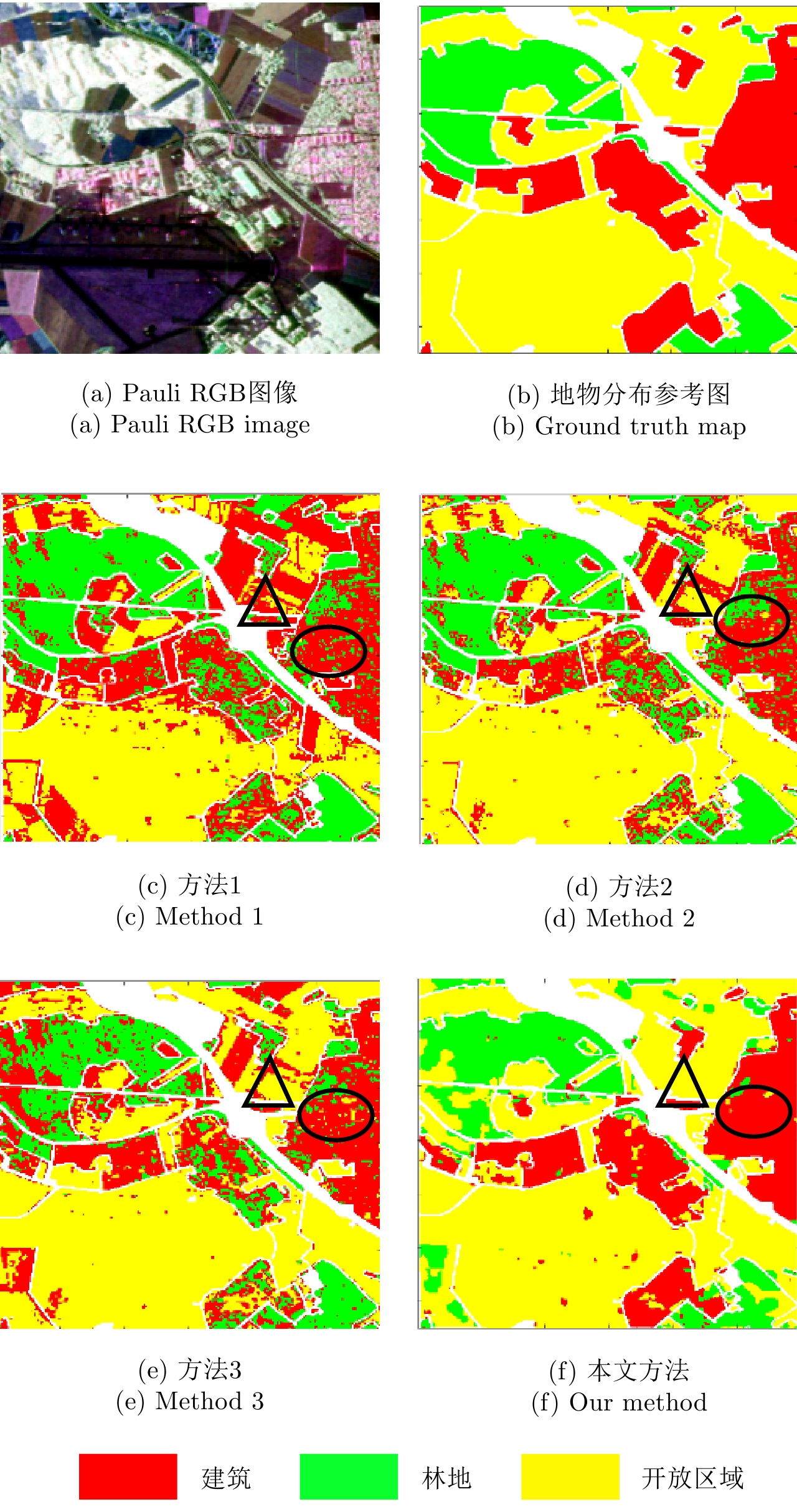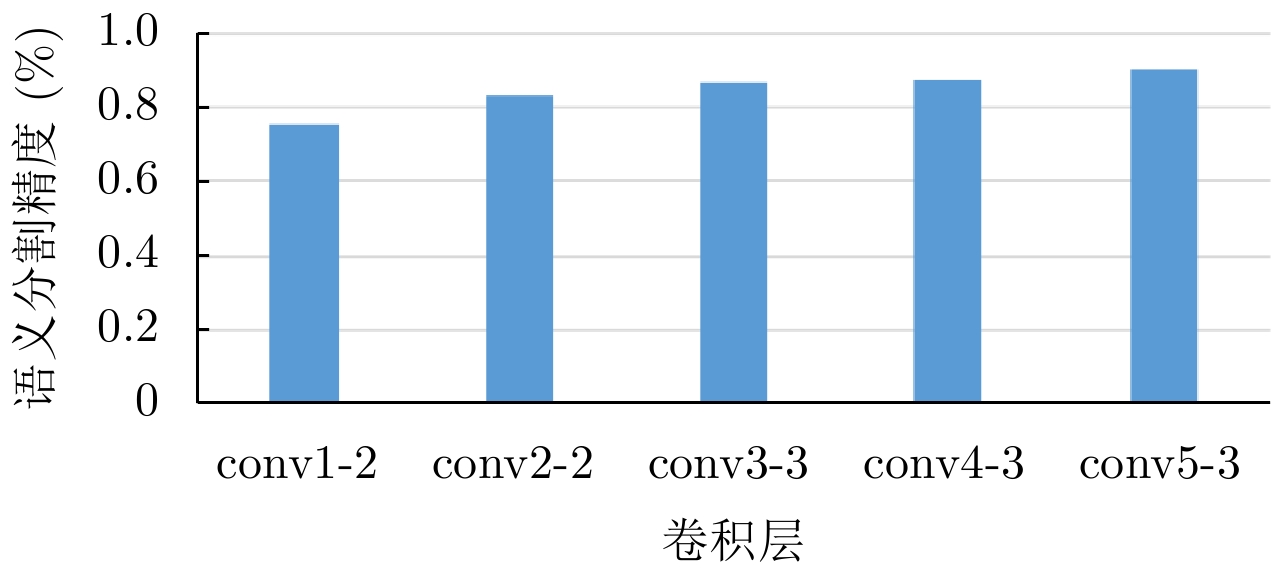| [1] |
NOVAK L M and BURL M C. Optimal speckle reduction in polarimetric SAR imagery[J]. IEEE Transactions on Aerospace and Electronic Systems, 1990, 26(2): 293–305. doi: 10.1109/7.53442 |
| [2] |
RANSON K J, SUN G, WEISHAMPEL J F, et al. An evaluation of AIRSAR and SIR-C/XSAR images for northern forest ecological studies in Maine, USA[C]. Proceedings of 1995 International Geoscience and Remote Sensing Symposium, IGARSS’95. Quantitative Remote Sensing for Science and Applications, Firenze, Italy, 1995: 994–996. doi: 10.1109/IGARSS.1995.521118. |
| [3] |
YANG W, ZHANG X, CHEN L J, et al. Semantic segmentation of polarimetric SAR imagery using conditional random fields[C]. Proceedings of 2010 IEEE International Geoscience and Remote Sensing Symposium, Honolulu, HI, USA, 2010: 1593–1596. doi: 10.1109/IGARSS.2010.5652378. |
| [4] |
CLOUDE S R and POTTIER E. An entropy based classification scheme for land applications of polarimetric SAR[J]. IEEE Transactions on Geoscience and Remote Sensing, 1997, 35(1): 68–78. doi: 10.1109/36.551935 |
| [5] |
ZHAO L W, ZHOU X G, JIANG Y M, et al. Iterative classification of polarimetric SAR image based on the freeman decomposition and scattering entropy[C]. Proceedings of the 1st Asian and Pacific Conference on Synthetic Aperture Radar, Huangshan, China, 2007: 473–476. doi: 10.1109/APSAR.2007.4418653. |
| [6] |
LEE J S, GRUNES M R, and KWOK R. Classification of multi-look polarimetric SAR imagery based on complex wishart distribution[J]. International Journal of Remote Sensing, 1994, 15(11): 2299–2311. doi: 10.1080/01431169408954244 |
| [7] |
BEAULIEU J M and TOUZI R. Segmentation of textured polarimetric SAR scenes by likelihood approximation[J]. IEEE Transactions on Geoscience and Remote Sensing, 2004, 42(10): 2063–2072. doi: 10.1109/tgrs.2004.835302 |
| [8] |
WU Y H, JI K F, YU W X, et al. Region-based classification of polarimetric SAR images using wishart MRF[J]. IEEE Geoscience and Remote Sensing Letters, 2008, 5(4): 668–672. doi: 10.1109/LGRS.2008.2002263 |
| [9] |
ZHOU Xiao-guang, KUANG Gang-yao, and WAN Jian-wei. A review of polarimetric SAR image classification[J]. Signal Processing, 2008, 24(5): 806–812. doi: 10.3969/j.issn.1003-0530.2008.05.023 |
| [10] |
胡涛, 李卫华, 秦先祥, 等. 基于深度CRF模型的图像语义分割方法[J]. 空军工程大学学报(自然科学版), 2018, 19(5): 52–57.
HU Tao, LI Wei-hua, QIN Xian-xiang, et al. An image semantic segmentation based on deep CRF model[J]. Journal of Air Force Engineering University (Natural Science Edition), 2018, 19(5): 52–57.
|
| [11] |
XIE W, JIAO L C, HOU B, et al. POLSAR image classification via wishart-AE model or wishart-CAE model[J]. IEEE Journal of Selected Topics in Applied Earth Observations and Remote Sensing, 2017, 10(8): 3604–3615. doi: 10.1109/JSTARS.2017.2698076 |
| [12] |
ZHAO Z Q, JIAO L C, ZHAO J Q, et al. Discriminant deep belief network for high-resolution SAR image classification[J]. Pattern Recognition, 2017, 61: 686–701. doi: 10.1016/j.patcog.2016.05.028 |
| [13] |
GAO F, HUANG T, WANG J, et al. Dual-branch deep convolution neural network for polarimetric SAR image classification[J]. Applied Sciences, 2017, 7(5): 447. doi: 10.3390/app7050447 |
| [14] |
ZHOU Y, WANG H P, XU F, et al. Polarimetric SAR image classification using deep convolutional neural networks[J]. IEEE Geoscience and Remote Sensing Letters, 2016, 13(12): 1935–1939. doi: 10.1109/LGRS.2016.2618840 |
| [15] |
ZHANG Z M, WANG H P, XU F, et al. Complex-valued convolutional neural network and its application in polarimetric SAR image classification[J]. IEEE Transactions on Geoscience and Remote Sensing, 2017, 55(12): 7177–7188. doi: 10.1109/TGRS.2017.2743222 |
| [16] |
WANG L, XU X, DONG H, et al. Multi-pixel simultaneous classification of PolSAR image using convolutional neural networks[J]. Sensors, 2018, 18(3): 769. doi: 10.3390/s18030769 |
| [17] |
KRIZHEVSKY A, SUTSKEVER I, and HINTON G E. ImageNet classification with deep convolutional neural networks[C]. Proceedings of the 25th International Conference on Neural Information Processing Systems, Lake Tahoe, Nevada, USA, 2012: 1097–1105. doi: 10.1145/3065386. |
| [18] |
SZEGEDY C, LIU W, JIA Y Q, et al.. Going deeper with convolutions[C]. Proceedings of 2015 IEEE Conference on Computer Vision and Pattern Recognition, Boston, MA, USA, 2015: 1–9. doi: 10.1109/CVPR.2015.7298594. |
| [19] |
SIMONYAN K and ZISSERMAN A. Very deep convolutional networks for large-scale image recognition[J]. arXiv preprint arXiv:1409.1556, 2014.
|
| [20] |
RAZAVIAN A S, AZIZPOUR H, SULLIVAN J, et al. CNN features off-the-shelf: An astounding baseline for recognition[C]. Proceedings of 2014 IEEE Conference on Computer Vision and Pattern Recognition Workshops, Columbus, OH, USA, 2014: 512–519. doi: 10.1109/CVPRW.2014.131. |
| [21] |
MIKA S, SCHÖLKOPF B, SMOLA A, et al.. Kernel PCA and de-noising in feature spaces[C]. Proceedings of 1998 Conference on Advances in Neural Information Processing Systems II, Cambridge, MA, USA, 1999: 536–542.
|
| [22] |
LAFFERTY J D, MCCALLUM A, and PEREIRA F C N. Conditional random fields: Probabilistic models for segmenting and labeling sequence data[C]. Proceedings of the 18th International Conference on Machine Learning, San Francisco, CA, USA, 2001: 282–289.
|
| [23] |
LI S Z. Markov Random Field Modeling in Computer Vision[M]. New York: Springer, 1995.
|
| [24] |
PLATT J C. Probabilistic outputs for support vector machines and comparisons to regularized likelihood methods[C]. Proceedings of the Advances in large Margin Classifiers, Cambrige, MA, USA, 1999: 61–74.
|
| [25] |
DOMKE J. Learning graphical model parameters with approximate marginal inference[J]. IEEE Transactions on Pattern Analysis and Machine Intelligence, 2013, 35(10): 2454–2467. doi: 10.1109/TPAMI.2013.31 |
| [26] |
VEDALDI A and LENC K. MatConvNet: Convolutional neural networks for MATLAB[C]. Proceedings of the 23rd ACM International Conference on Multimedia, Brisbane, Australia, 2015: 689–692. doi: 10.1145/2733373.2807412. |
| [27] |
韩萍, 韩宾宾. 基于典型散射差异指数的PolSAR图像Lee滤波[J]. 系统工程与电子技术, 2018, 40(2): 287–294.
HAN Ping and HAN Bin-bin. Lee filter of PolSAR image based on typical scattering difference index[J]. Systems Engineering and Electronics, 2018, 40(2): 287–294.
|




 Submit Manuscript
Submit Manuscript Peer Review
Peer Review Editor Work
Editor Work





 DownLoad:
DownLoad:


